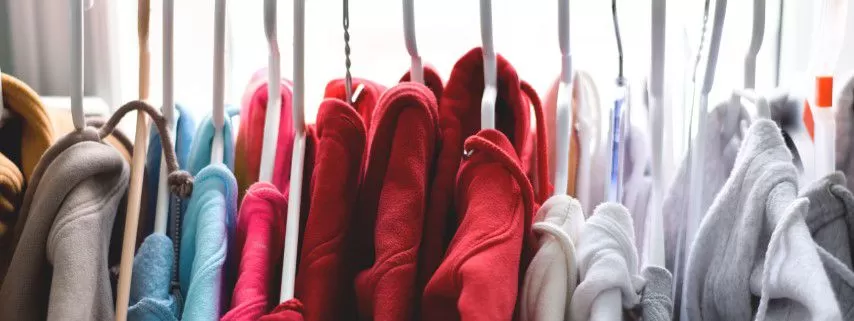
Clothing Donation Exposed: What These Charities Really Do With Your Donations
Donating your gently used clothes to charity seems like a win-win situation. You clear out your closet, help those in need, and contribute to a good cause. But what if the reality behind your good intentions isn’t as straightforward as it seems? What if some of the clothes you donate never reach those in need or aren’t used in the way charities promise? Unfortunately, the journey of your clothing donations can sometimes take a detour, and in certain cases, charities have been found to mishandle donations for their own benefit.
Let’s take a closer look at the darker side of clothing donations – exploring examples of charities that mishandle donated clothes and fail to use them in the way they claim. Knowing the truth behind what happens to your donated items can help you make more informed choices about where you give.
The Misleading Transparency of Charities
When you donate clothes to charities like Goodwill, The Salvation Army, or other well-known organizations, you probably assume that your items will be used to clothe people in need. However, that’s not always the case. Many large charities operate under a resale business model where the bulk of donated items end up on the sales floors of thrift stores. While this may still contribute to the charity’s mission – since profits from these sales go toward programs like job training or housing assistance – the reality is that much of the clothing never directly helps the individuals they claim to serve.
A troubling issue with some of these larger organizations is their lack of transparency regarding where the money from sales goes. For example, Goodwill has been criticized for paying its executives exorbitant salaries while some of their workers with disabilities are paid less than minimum wage, due to legal loopholes in labor laws. Although they claim to be helping marginalized groups, the financial practices of some of these charities show a different side of the story.
Clothing Donations Used for Profit, Not Charity
Another disturbing reality is that many charities don’t use the majority of donated clothing to help those in need at all. Instead, they treat these items as inventory to generate revenue. This issue becomes even murkier when organizations sell the clothes to third-party wholesalers, who then resell them overseas for profit.

For example, The Salvation Army has been involved in the international secondhand clothing trade for decades. Clothes that don’t sell locally are often shipped in bulk to countries like Kenya, Ghana, and Uganda. While this might seem like a noble cause – providing affordable clothes to people in developing countries – it has negative economic consequences. These massive inflows of cheap secondhand clothing have devastated local textile industries in Africa, leading to job losses and a weakened economy. Instead of empowering communities, this practice can foster dependency on foreign goods and stifle local businesses.
Moreover, the fact that donated clothing is often treated as a commodity raises ethical concerns. When charities sell clothing to overseas markets for profit, it begs the question: Is this really charity, or is it a business model that exploits well-meaning donors? Many donors believe their clothing will be given to those in need, not sold for profit in a completely different part of the world.
The Problem of Excess Donations: Where Do the Unwanted Clothes Go?
Another issue that arises is what happens to clothes that can’t be resold or donated locally. With so many people donating clothes, especially after major events like natural disasters, charities can be overwhelmed with excess items. This can lead to donations being mishandled in surprising ways.
In some cases, large charities are forced to send massive amounts of excess clothing to landfills. For instance, after the devastating 2011 earthquake in Haiti, millions of dollars in donated goods, including clothes, flooded into the country. However, there were far too many donations for the local infrastructure to handle, and much of it ended up unused and eventually discarded.
Similarly, when donation centers receive items that are in poor condition (stained, torn, or otherwise unusable), these are often thrown away or sold to textile recyclers at a minimal cost. The items may be shredded for rags or used as industrial insulation, but they don’t serve the humanitarian purpose donors may have hoped for. In these cases, well-intentioned donations ultimately contribute to waste.
Shady Practices of For-Profit “Charities”
Not all organizations that collect clothing donations are registered charities. Some companies operate under the guise of charity but are actually for-profit businesses. These organizations often place donation bins in parking lots, collecting large amounts of clothing without clearly indicating that they are not charitable organizations.
One example of this is Planet Aid, a controversial organization that collects clothing donations through yellow bins found across the U.S. While Planet Aid claims to use profits from reselling clothes to fund development projects in Africa, investigative reports have suggested that only a fraction of the proceeds actually go toward these initiatives. In fact, the organization has been linked to a Danish cult-like group called Tvind, which has faced accusations of misappropriating funds intended for charitable causes.

This raises an important question: How can donors ensure that their contributions are truly going to help those in need and not lining the pockets of unscrupulous businesses?
How to Ensure Your Donations Make a Difference
So, how can you make sure that your donated clothes are being used in the way you intend? Here are a few steps to help ensure your contributions are making a real impact:
- Research the Charity: Before donating, take the time to research the charity you’re considering. Look for organizations that are transparent about how they use donations, including where your clothes go and how they help the community. Websites like Charity Navigator or GuideStar can provide ratings and financial information to help you make an informed decision.
- Donate Locally: One way to ensure your clothes directly benefit those in need is to donate to local shelters, community organizations, or clothing drives. These charities often have a clearer mission and are more likely to distribute the clothing directly to those who need it, rather than reselling it for profit.
- Organize Clothing Swaps: If you want to ensure your clothes are reused locally, consider organizing a clothing swap with friends, family, or neighbors. This way, your gently-used items stay within the community, and you can avoid any concerns about mishandling by larger organizations.
- Repurpose or Recycle: If your clothes are too worn or damaged to donate, consider upcycling them into new items (like turning old t-shirts into cleaning rags or bags). Alternatively, find textile recycling programs that will responsibly handle unusable clothing, keeping them out of landfills.
Final Thoughts
Donating clothes is a wonderful way to give back, but it’s essential to be informed about where your donations are going and how they’re being used. While many charities operate with integrity, some have been found to mishandle donations for their own benefit, either by profiting from the sale of clothes or by allowing excess donations to go to waste. By doing a bit of research and donating thoughtfully, you can ensure your contributions truly make a difference for those in need.
Whether you choose to donate locally, organize a clothing swap, or recycle old textiles, being mindful of where your clothes end up can help you make more sustainable and impactful choices. After all, giving with intention means your donations can create the positive change you intended.

Kelly P
Kelly is your go-to guide for all things community-focused and eco-friendly. With a fun, conversational style, she loves breaking down big ideas into easy, relatable tips. Whether she’s talking about donating clothes, reducing waste, or giving back to the community, Kelly’s all about making a positive impact while keeping things light and engaging. She’s all about action and loves inspiring others to roll up their sleeves and make a difference!

Kelly P
Kelly is your go-to guide for all things community-focused and eco-friendly. With a fun, conversational style, she loves breaking down big ideas into easy, relatable tips. Whether she’s talking about donating clothes, reducing waste, or giving back to the community, Kelly’s all about making a positive impact while keeping things light and engaging. She’s all about action and loves inspiring others to roll up their sleeves and make a difference!





